Oct
14
2019
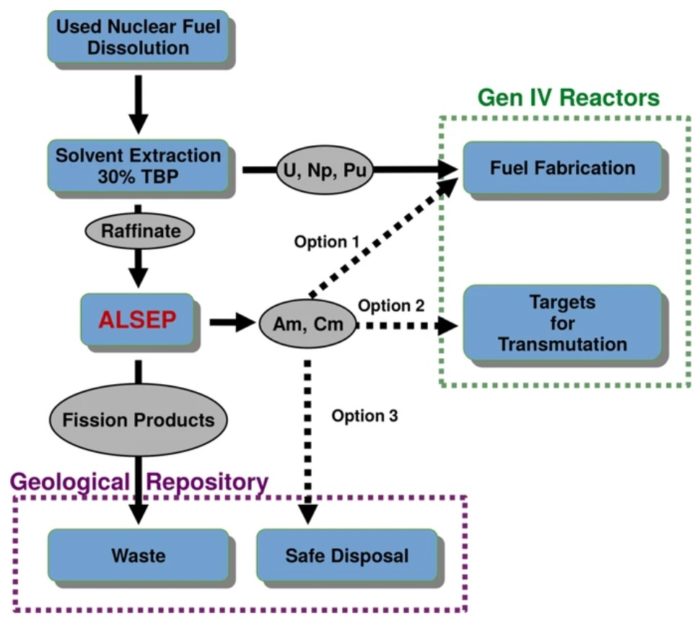 Evaluating the risks and benefits of nuclear fission is a bit of a moving target as the technology develops. Even with established nuclear power plant designs and management technology, I think the benefits outweigh the risks when you compare it to the alternatives and factor global warming into the mix. (I discussed this before and won’t go over all the points again here.)
Evaluating the risks and benefits of nuclear fission is a bit of a moving target as the technology develops. Even with established nuclear power plant designs and management technology, I think the benefits outweigh the risks when you compare it to the alternatives and factor global warming into the mix. (I discussed this before and won’t go over all the points again here.)
However, we are not stuck with the current nuclear technology. We are on the brink of developing so-called Generation IV reactors that have a number of advantages. They are safer, smaller, more efficient, and generate significantly less waste (used nuclear fuel – UNF). Scientists, however, have now reported an advance that can potentially significantly reduce UNF, with or without Gen IV reactors.
Closing the Nuclear Fuel Cycle with a Simplified Minor Actinide Lanthanide Separation Process (ALSEP) and Additive Manufacturing.
This is a process for separating various components of the UNF, specifically removing the actinide lanthanide elements. The targets are long-lived isotopes of americium (Am) and curium (Cm) and also neptunium (Np). These are called minor actinides (MA) in the paper. Why is it important to separate out these elements from the UNF? There are two potential reasons.
First, these are the highly toxic and very long-lived radioactive elements in UNF. If you separate them out, the rest of the nuclear waste can be stored much easier and the time it would take for the half-life to decrease the radioactivity down to the level of uranium ore would be reduced from hundreds of thousands of years to just hundreds of years. It’s also easier to store because it will not get as hot.
Continue Reading »
Oct
11
2019
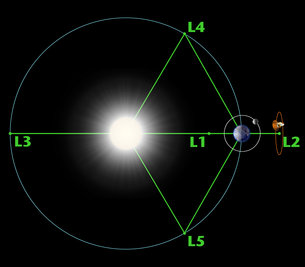 Let’s consider the following scenario – the Earth is at risk for a disruptive event. This event has, conservatively, about a 0.2% chance of happening on any given year. But that is the most conservative estimate, at the high end it could be more like 12% over the next decade. Either way the chance of this type of event happening in the 21st century is quite high, and no matter what it is inevitable.
Let’s consider the following scenario – the Earth is at risk for a disruptive event. This event has, conservatively, about a 0.2% chance of happening on any given year. But that is the most conservative estimate, at the high end it could be more like 12% over the next decade. Either way the chance of this type of event happening in the 21st century is quite high, and no matter what it is inevitable.
The result will likely be taking out power grids, possibly world wide in a worst-case scenario. Reasonable recovery will take about a year, with full recovery taking about a decade. Just imagine what would happen if we lost our power grid for a year. No digital banking, no internet, no household power. The most conservative estimate of how much such an event would cost is $2 trillion dollars, but experts are increasingly leaning toward $20 trillion as being a closer estimate (and this figure will only go up in the future).
So here’s my question – what do you think we should spend now to avoid a high probability of civilization collapse over the next century costing tens of trillions of dollars and growing? I am not talking about global warming, or environmental degradation, the death of the bees, an asteroid strike, or massive crop failure. I am talking about a coronal mass ejection (CME) – a solar storm.
A CME is actually the greatest threat to civilization that we face, in terms of probability and effect. In fact I think we are underestimating the chaos that a worst-case scenario would cause. Imagine going without power for a year. I know, there are people around the world who live without power, and the residents of Peurto Rico recently experienced something similar. But if this happened on a global scale, there’s no one coming with aid. Global infrastructures on which we all depend would collapse. How many people would starve or freeze? How much wood would be burned to keep warm or cook until the power comes back on? There are so many downstream effects that we cannot anticipate.
Continue Reading »
Oct
10
2019
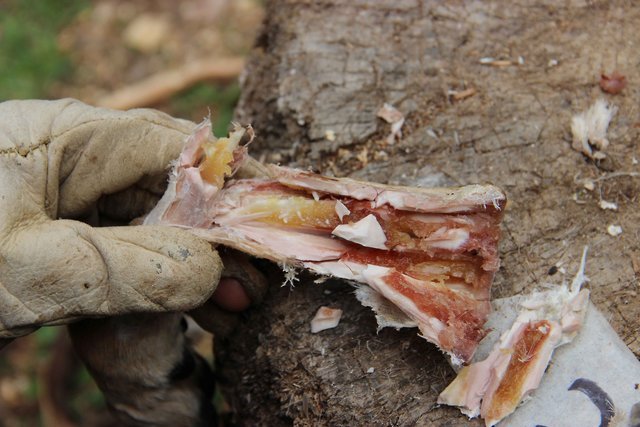 There are many things we take for granted in modern life, skills that humanity developed over literally hundreds of thousands of years, but also many modern conveniences that are fairly recent. One is food storage – saving food for later consumption.
There are many things we take for granted in modern life, skills that humanity developed over literally hundreds of thousands of years, but also many modern conveniences that are fairly recent. One is food storage – saving food for later consumption.
We began as hunter-gatherers, a lifestyle that involves mostly consuming food right as it is acquired. This creates times of feast and famine, but little consistency or predictability. Without refrigeration and other techniques of food preservation, most foods would not last long. Cooked meat, gathered fruits might last a few days, while nuts and roots might last a bit longer. But that was about it.
Agriculture led to a significant increase in our control over our food supply. We could now store food as dried grains for months. As we cultivated crops, some were selected for storing well. Some hard-skinned squash, for example, can keep for several months. Cheese was a huge discovery, preserving milk calories also for months. Domesticated animals could be “preserved” indefinitely, and then slaughtered when needed. Salting, pickling, smoking, and curing were discovered over time as methods of preserving various foods. Industrialization eventually allowed for things like canning and, of course, refrigeration.
But what was the oldest and first example of humans preserving food for later consumption? Archaeologists think they have discovered it – researchers from Tel Aviv report the finding from Qesem Cave, a paleolithic human settlement from 400,000 years ago. They found evidence that the people living there would preserve deer and other bones for potentially up to 9 weeks, and then break them open to eat the marrow.
Continue Reading »
Oct
08
2019
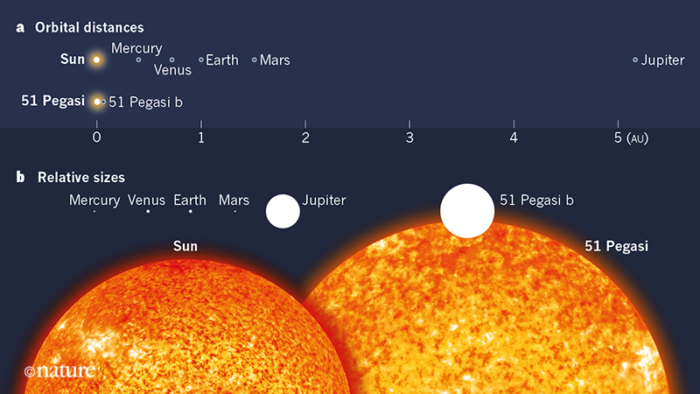 It’s Nobel Prize time of year again (it always seems to come around so fast), and the Nobel Prizes for Medicine and Physics have been announced. The physics prize goes to three astronomers, James Peebles, Michel Mayor and Didier Queloz, for contributing to our understanding of the universe and our place in it.
It’s Nobel Prize time of year again (it always seems to come around so fast), and the Nobel Prizes for Medicine and Physics have been announced. The physics prize goes to three astronomers, James Peebles, Michel Mayor and Didier Queloz, for contributing to our understanding of the universe and our place in it.
This is a more abstract Nobel Prize theme than many, and the first awardee, James Peebles, was recognized for a lifetime of collaborative research, more than any specific discovery. I like it.
Peebles was one of the cosmologists who predicted the existence of the cosmic microwave background radiation (CMB). This is the afterglow of the Big Bang at the beginning of our universe. It’s existence was confirmed in 1964 by astronomers Robert Wilson and Arno Penzias. It’s hard to overstate how monumental this prediction and later confirmation were to cosmology and our understanding of the universe.
The utility of the CMB goes beyond confirming the Big Bang. As the name implies, it is now the background temperature or glow of the entire universe. This has proven to be a highly useful window into the history and structure of the universe. Everything on the cosmic scale seems to leave its fingerprints in the CMB. That is always the best kind of discovery, and I have noticed one that attracts the attention of the Nobel committee – discoveries that open up entire fields of subsequent research.
Continue Reading »
Oct
07
2019
 We are beginning to experience some growing pain with widespread adoption of wind and solar energy. Solar in particular is causing utility companies some heartache because of its distributed design and intermittent energy production. None of the issues raised are fatal problems, but we do need to address them head on.
We are beginning to experience some growing pain with widespread adoption of wind and solar energy. Solar in particular is causing utility companies some heartache because of its distributed design and intermittent energy production. None of the issues raised are fatal problems, but we do need to address them head on.
The basic problem is that we cannot simply look at each piece of energy production in isolation. It’s tempting to think that if you install solar roof panels, that is a pure environmental good because clean energy will be replacing more dirty energy. Initially this may have been largely the case, with very low penetration of distributed solar. However, as the amount of installed solar increases, tensions with utility companies and the complexity of integrating into the power grid are rising.
In 2018 solar was producing 1.6% of total electricity generation in the US (total renewable is 17.1%), but this is projected to rise considerably over the next decade. Solar and wind cause challenges for the grid because they are intermittent sources. For the individual installing solar will likely result in decreased electricity cost. However, if our concern is the overall efficiency and environmental impact, a more complicated evaluation is necessary.
A recent study by Duke Energy highlights this complexity. This is not an objective source – some utility companies are taking a hostile attitude toward distributed energy because of the problems it causes. Here is a quote from Dan Kish, distinguished senior fellow at the Institute for Energy Research, to give you an idea:
“Renewable energy sounds good, but it performs terribly. If you want electricity available when you need it, you don’t want intermittent, unreliable, renewable energy,” Kish said. “It’s like a cancer on an efficient grid, with its ups-and-downs forcing other sources to pick up the slack in the most inefficient ways, which, in some cases, are more polluting.”
Continue Reading »
Oct
04
2019
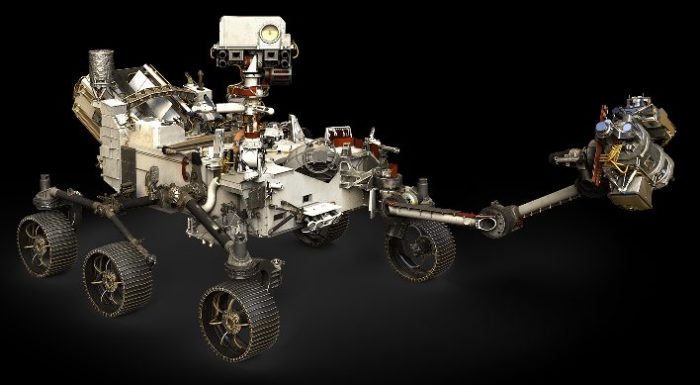 The next NASA rover to Mars, the Mars 2020 Rover (final name to be determined), launches next July. It will arrive at Mars in February 2021. This is the next iteration of rover design and has some interesting new features, include a drone that can fly around to survey more of the Martian surface.
The next NASA rover to Mars, the Mars 2020 Rover (final name to be determined), launches next July. It will arrive at Mars in February 2021. This is the next iteration of rover design and has some interesting new features, include a drone that can fly around to survey more of the Martian surface.
But perhaps the feature that is getting the most attention is the drill. For the first time a Mars rover will have the ability to drill down into the rock and dirt. Why is this so important? If Mars ever contained life, then it is likely the remnants of that life can be found down in the rocks, rather than on the surface. This is the first rover specifically designed to look for signs of life.
There is even the remote possibility of finding signs of recent, or even current life. The mission will be looking for life signatures, such as certain forms of carbon, or signs of sustained water presence in the past. Once the rover lands and is operational, it should only take a few months for answers to start beaming to life. We may know by the middle of 2021 if life ever existed on Mars.
Finding signs of life on Mars will have profound scientific implications. However, CNN, when reporting about this, chose to go with this headline: “When — or if — NASA finds life on Mars, the world may not be ready for the discovery, the agency chief says.” They quotes NASA chief scientist, Jim Green:
“It will be revolutionary,” Green told the Telegraph. “It will start a whole new line of thinking. I don’t think we’re prepared for the results. We’re not.”
Continue Reading »
Oct
03
2019
 The notion that ontogeny (development from a fertilized egg to adult) recapitulates phylogeny (evolutionary history) is an outdated notion that has been scientifically rejected. That does not mean, however, that evolutionary history is not reflected in developmental pathways. Creationists often conflate the two in order to create a strawman of the current scientific position.
The notion that ontogeny (development from a fertilized egg to adult) recapitulates phylogeny (evolutionary history) is an outdated notion that has been scientifically rejected. That does not mean, however, that evolutionary history is not reflected in developmental pathways. Creationists often conflate the two in order to create a strawman of the current scientific position.
The difference is interesting and makes sense. What does not happen (and why should it) is stages of embryonic development passing through adult forms of ancestral species. What does happen is stages of embryonic development passing through embyronic forms of ancestral species. This about evolution and development this way – evolution often occurs through altering developmental pathways. But this alteration can occur anywhere along the developmental timeline.
What evolution cannot do is rewrite the genetic code from the ground up. It can only alter the existing code. As evolutionary history gets longer and longer, therefore, the developmental pathway of living creatures gets more and more convoluted and tortuous. At no point can evolution “clean up” the code. So contemporary animals do not develop in a straight line to their mature form. They take a twisting and winding course that reflects their past history. But of course this path does not pass through the adult form of their ancestors, because development doesn’t follow those old pathways all the way to their conclusion. They are diverted along the way.
As the technology to perform high definition 3D scans of embryonic anatomy improve, we are finding more and more examples of this phenomenon. A recent paper gives a dramatic example – Development of human limb muscles based on whole-mount immunostaining and the links between ontogeny and evolution.
Continue Reading »
Oct
01
2019
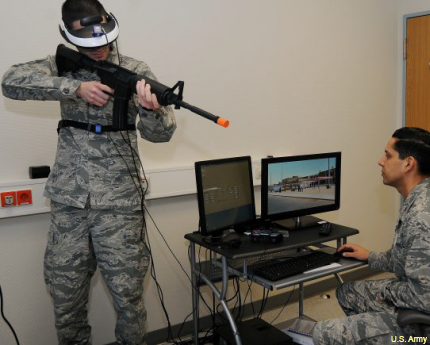 Post-Traumatic Stress Disorder (PTSD) results from exposure to traumatic events. Soldiers in war, for example, are at high risk of PTSD because of repeated exposure over time. But even a single event, like experiencing the attacks on 9/11, can cause PTSD. The prevalence in the US is about 8.7%. Symptoms include:
Post-Traumatic Stress Disorder (PTSD) results from exposure to traumatic events. Soldiers in war, for example, are at high risk of PTSD because of repeated exposure over time. But even a single event, like experiencing the attacks on 9/11, can cause PTSD. The prevalence in the US is about 8.7%. Symptoms include:
“the development of characteristic symptoms, such as distressing memories or dreams about the traumatic event, flashbacks, psychological distress produced by internal or external cues that symbolize the traumatic event, physiological reactions, avoidance of associated stimuli, and negative alterations in cognitions and mood.”
The only real proven therapy for PTSD is exposure therapy. This has many variations, but at its core it involves exposure to stimuli that triggers PTSD symptoms or simulations of the initial trauma, while undergoing some type of cognitive therapy. The mechanism of exposure and the exact nature of the cognitive therapy vary, but the basic formula is the same. There are many treatments (such as eye movement or tapping therapy) that include additional features to the therapy, but the evidence shows that these extra features are superfluous and add nothing to the efficacy of the intervention. Every intervention that works seems to include some form of exposure therapy.
Much of the clinical research therefore focuses on optimizing this therapy. There are many variables, and it can be tricky to control for them well with such an intervention, but the research grinds forward. The working theory is that the traumatic event has become associated with the trauma itself, and so people avoid similar stimuli (locations, crowds, anything that might remind them of the traumatic event). But this avoidance locks in the negative association. Exposure therapy re-exposes patients to the conditions of the trauma, but in a safe space and without the associated trauma. This way the brain habituates to the stimuli and essentially forgets the association with trauma.
Continue Reading »
 Evaluating the risks and benefits of nuclear fission is a bit of a moving target as the technology develops. Even with established nuclear power plant designs and management technology, I think the benefits outweigh the risks when you compare it to the alternatives and factor global warming into the mix. (I discussed this before and won’t go over all the points again here.)
Evaluating the risks and benefits of nuclear fission is a bit of a moving target as the technology develops. Even with established nuclear power plant designs and management technology, I think the benefits outweigh the risks when you compare it to the alternatives and factor global warming into the mix. (I discussed this before and won’t go over all the points again here.)
 Let’s consider the following scenario – the Earth is at risk for a disruptive event. This event has, conservatively, about a 0.2% chance of happening on any given year. But that is the most conservative estimate, at the high end it could be more like
Let’s consider the following scenario – the Earth is at risk for a disruptive event. This event has, conservatively, about a 0.2% chance of happening on any given year. But that is the most conservative estimate, at the high end it could be more like  There are many things we take for granted in modern life, skills that humanity developed over literally hundreds of thousands of years, but also many modern conveniences that are fairly recent. One is food storage – saving food for later consumption.
There are many things we take for granted in modern life, skills that humanity developed over literally hundreds of thousands of years, but also many modern conveniences that are fairly recent. One is food storage – saving food for later consumption. It’s Nobel Prize time of year again (it always seems to come around so fast), and the Nobel Prizes for Medicine and Physics have been announced.
It’s Nobel Prize time of year again (it always seems to come around so fast), and the Nobel Prizes for Medicine and Physics have been announced.  We are beginning to experience some growing pain with widespread adoption of wind and solar energy. Solar in particular is causing utility companies some heartache because of its distributed design and intermittent energy production. None of the issues raised are fatal problems, but we do need to address them head on.
We are beginning to experience some growing pain with widespread adoption of wind and solar energy. Solar in particular is causing utility companies some heartache because of its distributed design and intermittent energy production. None of the issues raised are fatal problems, but we do need to address them head on. The next NASA rover to Mars,
The next NASA rover to Mars,  The notion that ontogeny (development from a fertilized egg to adult) recapitulates phylogeny (evolutionary history) is an outdated notion that has been scientifically rejected. That does not mean, however, that evolutionary history is not reflected in developmental pathways. Creationists often conflate the two in order to create a strawman of the current scientific position.
The notion that ontogeny (development from a fertilized egg to adult) recapitulates phylogeny (evolutionary history) is an outdated notion that has been scientifically rejected. That does not mean, however, that evolutionary history is not reflected in developmental pathways. Creationists often conflate the two in order to create a strawman of the current scientific position. Post-Traumatic Stress Disorder (PTSD) results from exposure to traumatic events. Soldiers in war, for example, are at high risk of PTSD because of repeated exposure over time. But even a single event, like experiencing the attacks on 9/11, can cause PTSD. The prevalence in the US is about 8.7%. Symptoms include:
Post-Traumatic Stress Disorder (PTSD) results from exposure to traumatic events. Soldiers in war, for example, are at high risk of PTSD because of repeated exposure over time. But even a single event, like experiencing the attacks on 9/11, can cause PTSD. The prevalence in the US is about 8.7%. Symptoms include:




